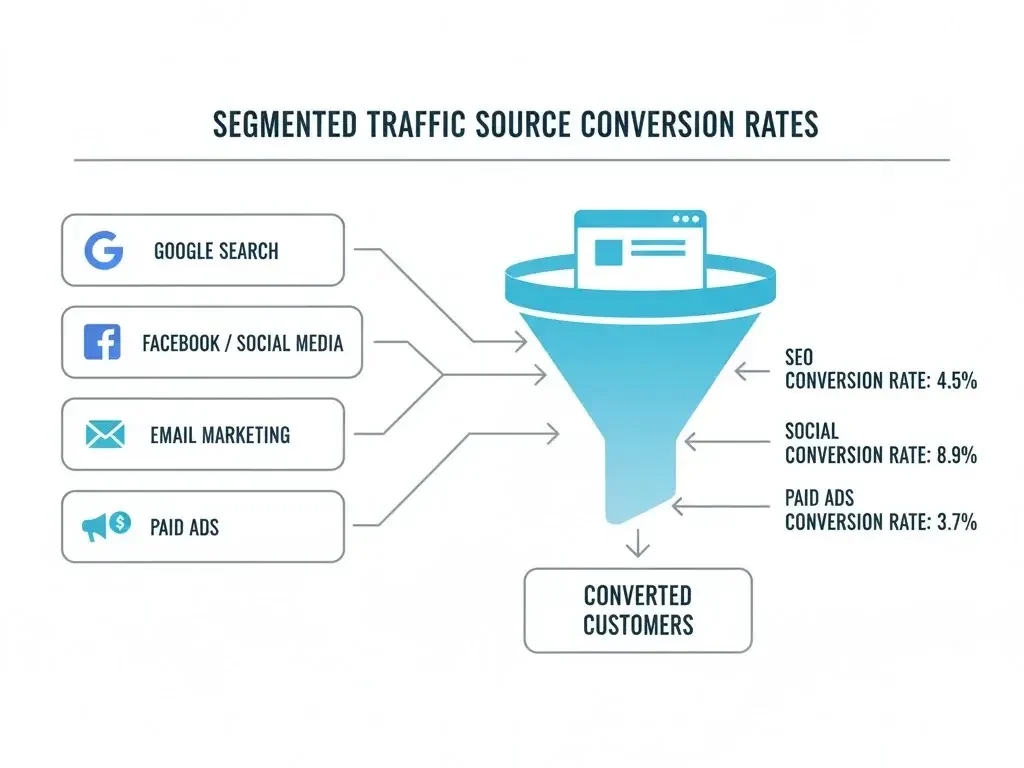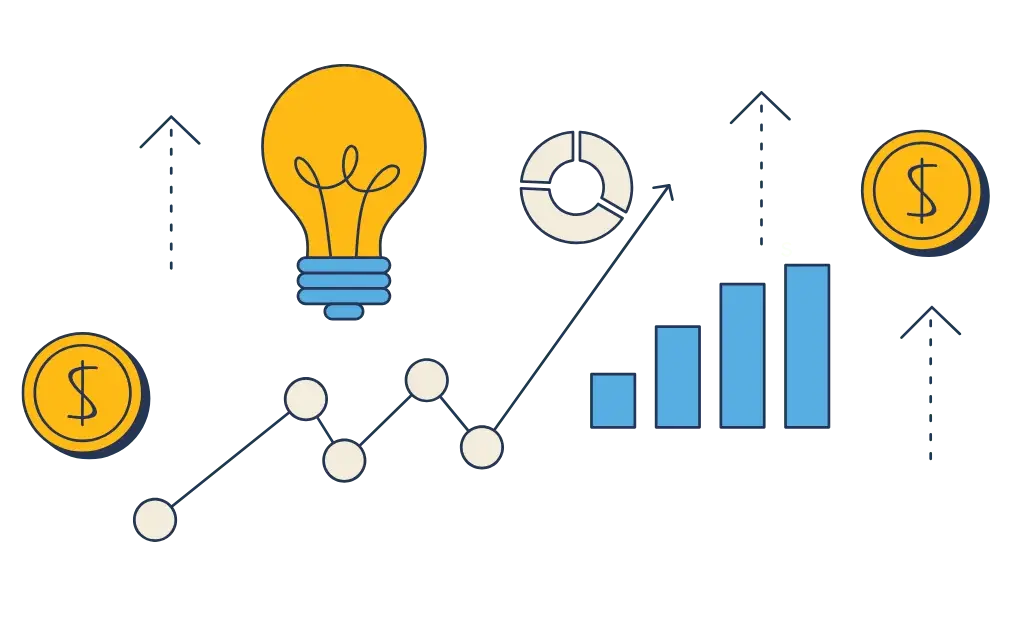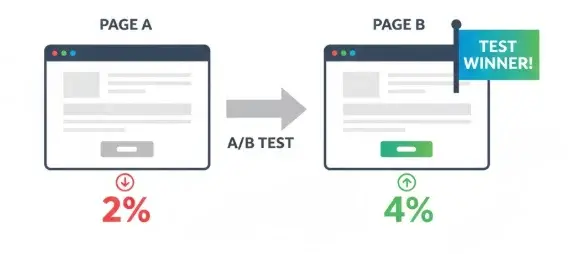What if a single percentage point increase could add thousands of dollars to your monthly revenue? Understanding the conversion rate optimization formula is the foundation of growing any online business, and it’s simpler than you might think. Whether you run an ecommerce store, a SaaS company, or a content website, knowing how to calculate and improve your conversion rate can transform casual browsers into paying customers. This guide will break down everything in simple terms anyone can understand, showing you exactly how to measure your website’s performance and make it better month after month.
What Is the Conversion Rate Optimization Formula?

The conversion rate optimization formula is straightforward and powerful:
Conversion Rate = (Number of Conversions ÷ Total Visitors) × 100
Let’s break down what each part means in simple terms. A conversion happens when someone does what you want them to do on your website—maybe they buy something, sign up for your newsletter, or download your app. Visitors are people who come to your site during a specific time period. The × 100 part turns your answer into a percentage, which makes it easier to understand and compare.
Here’s a simple example to make this crystal clear. Let’s say 2,000 people visited your online store last month, and 80 of them bought something. Your conversion rate would be (80 ÷ 2,000) × 100 = 4%. That means 4 out of every 100 visitors became customers!
Conversion Rate Optimization Calculator
Conversion Rate Calculator
Step by Step Guide to Calculate Your Conversion Rate

Breaking down the conversion rate optimization formula into simple steps makes it easy for anyone to calculate their website's performance.
Step 1: Define Your Conversion
What counts as a conversion depends entirely on your business goals. For an online store, a conversion is typically a purchase. For a blog, it might be email signups or newsletter subscriptions. For a software company, it could be free trial signups or demo requests. The key is choosing one primary action that matters most to your business success.
Step 2: Count Your Total Visitors
You'll find this number in Google Analytics under the Sessions or Users section. It's important to understand the difference between sessions and unique users. Sessions count every visit to your site, even if the same person comes back multiple times. Unique users count each person only once during your chosen time period, no matter how many times they visit.
Step 3: Count Your Conversions
Direct yourself to the Conversions section in your analytics tool to find this number. If you haven't set up conversion tracking yet, you'll need to create goals in Google Analytics by going to Admin, selecting your View, clicking Goals, and configuring what actions you want to track. This might be destination pages (like a thank-you page after purchase) or specific events (like button clicks).
Step 4: Do the Math
Divide your conversions by your visitors, then multiply by 100. Here are three different examples so you can see the pattern:
- Example 1: (50 conversions ÷ 1,000 visitors) × 100 = 5%
- Example 2: (200 conversions ÷ 10,000 visitors) × 100 = 2%
- Example 3: (30 conversions ÷ 600 visitors) × 100 = 5%
Step 5: Choose Your Time Period
Both numbers—conversions and visitors—need to come from the same time period for an accurate calculation. Monthly calculations are most common for tracking progress because they provide enough data to see patterns without getting lost in daily fluctuations.
Different Types of Conversion Rate Formulas You Need to Know
Sessions vs Users in the Conversion Rate Optimization Formula

Deciding whether to use sessions or unique users in your conversion rate optimization formula depends on your business model. Use sessions for ecommerce sites where people might buy multiple times during different visits—this captures every opportunity for conversion. Use unique users for subscription businesses or one-time signups where someone only converts once, like newsletter signups or software trials.
Net New Customer Formula
When planning revenue goals, this related formula helps you work backward:
Net Revenue Goal ÷ Average Sales Price = Number of New Customers Needed
Conversion Rate Formula Comparison Table
| Basic Conversion Rate | General website performance | (50 ÷ 1,000) × 100 = 5% |
| Session-Based | Ecommerce, repeat purchases | (200 sales ÷ 5,000 sessions) × 100 = 4% |
| User-Based | Subscriptions, one-time signups | (30 signups ÷ 1,500 users) × 100 = 2% |
Lead Goal Formula
For B2B companies focusing on lead generation, this formula calculates how many leads you need:
Number of New Customers ÷ Lead to Customer Close Rate = Lead Goal
SEO Traffic Conversion Rate

Segmenting your conversion rate optimization formula by traffic source reveals which channels perform best. Calculate conversions specifically from Google search traffic versus social media, email campaigns, or paid ads to understand where your most valuable visitors come from. SEO traffic typically converts at 2.10% visitor-to-lead for SaaS companies, while PPC converts at 0.70%.
What Counts as a Good Conversion Rate?
Understanding industry benchmarks helps you set realistic expectations for your conversion rate optimization formula results.
Average websites: 2% to 4% across all industries
B2B SaaS companies: Visitor-to-lead conversion averages 1% to 3%, with overall lead-to-customer conversion at 2% to 5%
Ecommerce stores: Global average falls between 1.8% to 2.3%, with significant variation by product category
Software and SaaS: Around 7% for free trial signups
These are just guidelines, not rules. Your "good" conversion rate depends heavily on your industry, what you sell, your price points, and who visits your site. A company selling expensive industrial machinery might be thrilled with 0.5% if each sale is worth $100,000. A company selling $10 ebooks might need 8% to generate meaningful revenue.
Ecommerce conversion rates vary dramatically by industry in 2025:
- Food and beverages: 4.9% to 6.11%
- Personal care products: 4.55% to 6.8%
- Electronics and home appliances: 3.6%
- Fashion and accessories: 1.9% to 3.01%
- Home decor and furniture: 1.24% to 1.4%
- Luxury and jewelry: 1.19%
Niche products typically have lower conversion rates but higher profit per sale, while broad market products have higher conversion rates but lower profit margins.
Factors That Affect Your Conversion Rate Optimization Formula Results

Traffic Volume and Quality
As you get more visitors, your conversion rate often decreases slightly, and this is completely normal. When you scale from hundreds to thousands of visitors, more casual browsers arrive who aren't ready to buy yet. Quality matters more than quantity—1,000 targeted visitors who are actively searching for your product will convert better than 10,000 random social media visitors.
Your Target Market Size
Products that appeal to everyone, like phone cases or everyday household items, can achieve higher conversion rates. Products for very specific needs, like specialized industrial equipment or niche software, naturally have lower rates because fewer people need them at any given time.
Product Type and Price
More expensive products require longer decision-making periods, resulting in lower conversion rates. A $5,000 laptop purchase involves extensive research and comparison shopping. Lower-priced impulse purchases like $15 accessories convert much faster because the financial risk is minimal.
Traffic Source
Visitors from Google searches looking for exactly what you offer convert significantly better than random social media visitors. Search traffic shows active intent—people are looking for solutions right now. Social media traffic often consists of casual browsers discovering your brand for the first time.
How to Track Conversions for Your Conversion Rate Optimization Formula
Setting Up Google Analytics

To track conversions accurately, you need to configure goals in Google Analytics. Sign in to your Google Analytics account, click Admin in the sidebar, select your View, click Goals, then click the +New Goal button. Enter a name for your conversion goal and select the goal type—either Destination (for tracking specific thank-you pages) or Event (for tracking button clicks or form submissions).
For Destination goals, enter the URL people see after completing your desired action. For Event goals, configure the Category, Action, and Label settings to match your tracking needs. Once saved, your goal starts tracking conversions immediately, and you can view performance in the Conversions report.
Tracking Multiple Conversion Types
When someone might complete several valuable actions in one visit, each unique order or signup counts as one conversion, not each individual item. Your conversion rate optimization formula should focus on the primary action that drives business value.
Including Offline Conversions
Complete conversion rate optimization includes phone calls and in-person sales that originated from your website. Many analytics tools can track phone numbers clicked on your website, connecting offline conversions back to your digital marketing efforts.
Using the Conversion Rate Optimization Formula to Improve Your Business

Calculate Your Baseline
The first time you calculate your conversion rate, you're establishing a baseline measurement. This starting point helps you measure whether changes you implement are actually working. Without a baseline, you're guessing—with one, you have concrete data to guide decisions.
Connect to Revenue Impact
The conversion rate optimization formula directly connects to your bottom line. Here's a simple example: If you have 10,000 monthly visitors and improve your conversion rate from 2% to 3%, that's 100 extra conversions. If your average sale is $50, that's $5,000 more revenue every single month, or $60,000 annually from just one percentage point improvement!
Identify Pages to Optimize First

Your conversion rate optimization formula helps pinpoint exactly where problems exist. Look for pages with high traffic but low conversions—these represent your biggest opportunities. A product page receiving 5,000 visitors monthly with a 1% conversion rate has far more potential than a page with 100 visitors at 2% conversion.
The Bigger CRO Process

Position the conversion rate optimization formula as step 2 in a comprehensive improvement process:
- Set clear, measurable goals
- Calculate current conversion rate using the formula
- Analyze where people abandon your site
- Create hypotheses for improvements
- Test changes systematically
- Measure new conversion rate
- Repeat the cycle continuously
This iterative approach drives consistent improvement over time.
Common Questions About the Conversion Rate Optimization Formula
Is there a perfect conversion rate?
No single perfect number exists for every business. Focus on improving your own rate month over month rather than obsessing over competitor comparisons. What matters is steady upward progress from your baseline.
Should I use sessions or unique users?
Use sessions for ecommerce and repeat purchase businesses where the same person might convert multiple times. Use unique users for one-time conversions like newsletter signups, free trial activations, or software downloads.
How often should I calculate my conversion rate?
Monthly calculations work best for most businesses. This timeframe provides enough data to identify meaningful patterns without getting distracted by daily fluctuations that don't reflect true performance trends.
What if my conversion rate goes down after getting more traffic?
This often happens naturally as you scale. More traffic usually means less targeted visitors mixed into your audience. Focus on attracting quality traffic through SEO and targeted campaigns, not just increasing raw visitor numbers.
Real Examples of the Conversion Rate Optimization Formula in Action
Example 1: Small Ecommerce Store
Sarah runs an online jewelry shop specializing in handmade pieces. Last month, 3,500 people visited her website and 105 people bought something. Her conversion rate is (105 ÷ 3,500) × 100 = 3%. That's right on target for ecommerce jewelry businesses, which typically convert between 1.9% and 3.01%!
Example 2: B2B Software Company
Mark's company sells project management software to small businesses. They had 2,000 visitors last quarter and 140 people started free trials. Their conversion rate is (140 ÷ 2,000) × 100 = 7%. This is excellent for B2B software, where visitor-to-trial conversion typically ranges from 1% to 3%!
Example 3: Content Website
Lisa runs a popular cooking blog focused on healthy recipes. She wants to grow her email subscriber list for future monetization. Last month, 15,000 people visited her blog and 450 signed up for her weekly newsletter. Her conversion rate is (450 ÷ 15,000) × 100 = 3%. She's doing great compared to average content site conversion rates of 2% to 4%!
Next Steps After Calculating Your Conversion Rate
Find Your Biggest Opportunities
Analyze your highest traffic pages with the lowest conversion rates. These pages have massive potential because small improvements affect many visitors. A 1% improvement on a page with 10,000 monthly visitors creates 100 additional conversions, while the same improvement on a page with 100 visitors only adds one conversion.
Test One Change at a Time
Make one improvement, wait several weeks to gather sufficient data, recalculate using the conversion rate optimization formula, and evaluate whether your percentage increased. Testing multiple changes simultaneously makes it impossible to know which one actually worked.
Keep Learning
Understanding the conversion rate optimization formula is just the beginning of your journey. The real magic happens when you use this number to guide systematic improvement efforts month after month. Top-performing websites continuously test, measure, and refine their approach.
For setting up conversion tracking in Google Analytics, the official Google Analytics help documentation provides step-by-step guidance. To compare your performance against current benchmarks, resources like WordStream's 2025 Conversion Rate Statistics offer comprehensive industry data.
Conclusion
The conversion rate optimization formula—Conversion Rate = (Number of Conversions ÷ Total Visitors) × 100is remarkably simple but incredibly powerful for growing your online business. Calculate your current rate today and start tracking it monthly to build a baseline for improvement. Remember that even small improvements in this number translate directly to substantial increases in revenue and business growth.
Now you know exactly how to calculate and use the conversion rate optimization formula to transform your website performance. Every percentage point you improve means more customers, more sales, and more success for your business. Start measuring today and watch your business grow month after month!
